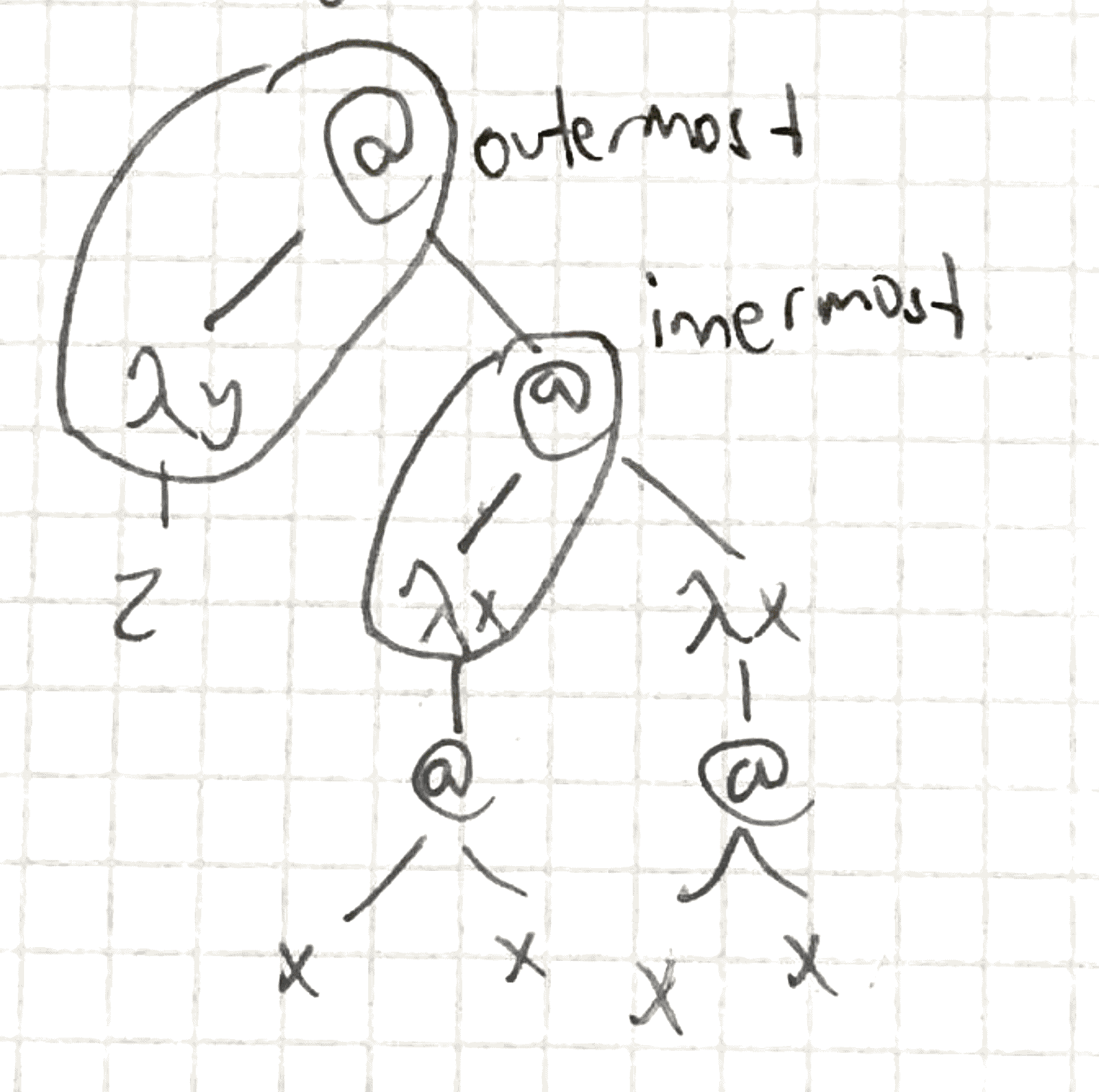Equational Programming
Table of Contents
Strategies
strategy: how to reduce a term
normalising strategy: gives a reduction sequence to a normal form. leftmost outermost.
e.g. given: (λy.z)(Ω)

- Outermost: not contained in another redex
- Innermost: does not contain another redex
- Leftmost: the one most on the left obviously
Call by need
reduce in every step the leftmost outermost redex. if it finds a loop, no normal form.
e.g. in above: (λy.z)(Ω) ➝ β z
another e.g.: (λx.fxx)((λx.x) 3) ➝ β f ((λx.x) 3) ((λx.x) 3) ➝ β f 3 3
pros:
- normalising
- all steps contribute to normal form cons:
- redexes may be copied
- difficult to implement
Call by value
Reduce in every step the leftmost innermost redex.
e.g. in above: (λy.z)(Ω) ➝ β (λ.z)(Ω) ➝ β (λy.z)(Ω) ➝ β …
e.g.: (λx.fxx) ((λx.x)3) ➝ β (λx.fxx) 3 ➝ β f 3 3
pros:
- redexes not copied
- easy to implement cons:
- not normalising
- reduction to normal form may reduce redexes that don’t contribute to normal form
Rightmost-outermost: not normalizing!
Rightmost outermost is not normalising. For example, take the term ((λx.x)(λx.y))(Ω).
Leftmost outermost:
((λx.x)(λx.y))(Ω) => (λx.y)(Ω) [reduces the λx.x]
=> y
Rightmost outermost:
((λx.x)(λx.y))(Ω) => ((λx.x)(λx.y))(Ω)
= ((λx.x)(λx.y))((λx.xx)(λx.xx)) [reduces the application in Ω]
=> ((λx.x)(λx.y))(Ω)
=> ((λx.x)(λx.y))(Ω)
=> etc.
It’s easier to see this if you draw the tree. An application with an application on the left side can’t be a redex. The leftmost outermost redex is the λx.x, whereas the rightmost outermost strategy reduces the application inside the Ω.
Leftmost outermost gives a result, while rightmost outermost goes into a loop. Therefore, rightmost outermost is not a normalizing strategy.